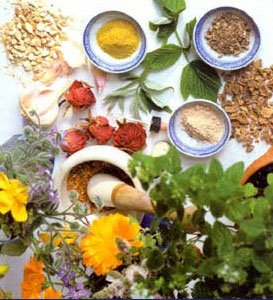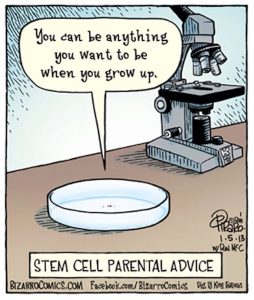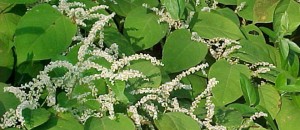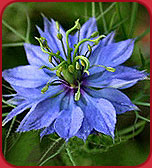Well, today marks the one-year anniversary of my entry into the blogging world. Has one entire year really gone by since my first post? Amazing!
 In my wildest dreams I never thought I would come to have such a consistent, wonderful and loyal readership (ever-growing, too!)…on the contrary, in the beginning, I feared that my blog would encounter a lot of opposition. Well, I am happy to say that my fears were ill-founded.
In my wildest dreams I never thought I would come to have such a consistent, wonderful and loyal readership (ever-growing, too!)…on the contrary, in the beginning, I feared that my blog would encounter a lot of opposition. Well, I am happy to say that my fears were ill-founded. 
So let me take this opportunity to thank each and every one of my blog readers for your kind comments, helpful advice and for pointing me in the direction of some of the best research I have done. Without you, without this blog, I would never have discovered the vast majority of these anti-myeloma substances.
My first big "thank you!" goes to Beth for urging me to create a blog. Then: to Sherlock for joining me in my experiments (and for coming up with brilliant new experiment ideas; non per nulla ti chiamo Sherlock!) and for being such a good friend to me in real life; to Roberto, Don Sunshine Sweet Pea, Wally, Cathy, Paul, Sue, Linda, old Bill, LPC, Marcelo, all my Italian blog readers (Carla etc.), my two Lisas and Marys…oh, dear, the list goes on and on. Well, you know who you are!  Last but not least, thank you, Stefano, for being my best friend, for keeping my computer in working order, and, most importantly, for getting me through all the bad times (TAT! You know what that means). But this is going to be a long post, so let’s get going!
Last but not least, thank you, Stefano, for being my best friend, for keeping my computer in working order, and, most importantly, for getting me through all the bad times (TAT! You know what that means). But this is going to be a long post, so let’s get going!
I thought it fitting that I celebrate my anniversary by reading a study that has been in my “read” file for quite a while, now. Published in December of 2006, it was co-authored by Prof. Bharat Aggarwal, who gave me a little push in the right direction by encouraging me to try curcumin (January 2006) and has been helpful and supportive ever since. I will be forever grateful to him. Even though there is no way I could ever pay him back, today’s discussion is my itsy bitsy tribute to this wonderful researcher, whom I hope to meet in person someday.
The study (abstract: http://tinyurl.com/yttmdh), published in the  “Journal of the Society for Integrative Oncology,” is titled: “From ancient medicine to modern medicine: Ayurvedic concepts of health and their role in inflammation and cancer.”
“Journal of the Society for Integrative Oncology,” is titled: “From ancient medicine to modern medicine: Ayurvedic concepts of health and their role in inflammation and cancer.”
Something I have read over and over again is mentioned in the abstract and discussed more in depth in the first part of the full study, which, by the way, Sherlock sent to me (eh, come sempre, grazie!): “In spite of the billions of dollars spent on cancer research and the availability of the best health care in the world, the reason for such a high incidence of cancer in the United States is unclear. Lifestyle has been named as one of the major contributors to the incidence of cancer. The higher incidence of cancer among immigrants from the Eastern world to the Western world further emphasizes the role of lifestyle.” I have read stories about populations where the incidence of cancer and other ailments is very low; but when members of these communities immigrate to the Western world, they begin developing cancer (etc.). This doesn’t sound like mere coincidence to me.
The study reminds us that the understanding of cancer at the molecular base is still very limited. That means that matters such as cancer prevention and treatment are “still lagging behind.” Good point!
Ayurveda, meaning “science of long life,” “is at least a 5,000-year-old system of Indian medicine (1500–1000 BC) designed to promote good health and longevity rather than to fight disease.” It treats the body AND the mind and spirit: “most diseases connected with the psychophysiologic and pathologic changes in the body are caused by imbalance in three different dosha (ie, vata, pitta, and kapha). The fundamental aim of ayurvedic therapy is to restore the balance between these three major body systems. Any imbalance can lead to inflammation.”
Interesting to note that the ancient concept of inflammation corresponds to the modern one: “redness, heat, loss of function, and swelling.”
Health is “the balanced coordination of body, mind and consciousness.” I have always been convinced that our mental state has a lot to do with how well we respond to treatments of any kind. My mother was told by a friend of hers, a nurse who worked in a U.S. oncology unit, that she could tell which cancer patients would do well just by looking at them. She was always right, apparently.
Ayurveda and cancer. “According to ayurveda, cancer results from lifestyle errors, such as unhealthy foods, poor hygiene, or poor behavior, or from physical trauma, all leading to imbalances of vata, pitta, and kapha, resulting in injury to the inner layer of the dermis (rohini, the sixth layer of the skin) and the formation of abnormal branches of blood vessels.” This part is very detailed and interesting, but too long to post about here. I would be glad, though, to forward the full study to anyone who requests it.
Treatment of cancer. There are three approaches in Ayurveda: health maintenance, restoration to normal, spiritual approach and disease cure. The techniques were (are!) very modern: “The principles of patient safety were foremost, including meticulous aseptic techniques used for surgery (eg, careful boiling of instruments, cleaning of hands). Treatment involves the surgical removal of tumor, herbal remedies, dietary modification, and spiritual treatment (eg, detoxification, rejuvenation, prayers, music therapy, aromatherapy, gem therapy, sound therapy, stress relief, meditation, yoga, and astrology).” Diet and exercise (yoga, e.g.) were also considered to be important, and meditation, which I practise in my own fashion (having never been taught how to do it properly), “leads to emotional and stress release and detoxification of the cellular and tissue memories.”
 In the 7th century, “surgery was considered one of the best methods of treatment for arbuda.” Arbuda is “definite malignancy.” Herbal treatments against cancer “were beneficial only in the beginning stage," but that also depended on the type of tumour involved. The surgical removal of tumours is described in detail…I must say, it’s really incredible to read about such careful sterile practises being used so many centuries ago. I was surprised and very impressed.
In the 7th century, “surgery was considered one of the best methods of treatment for arbuda.” Arbuda is “definite malignancy.” Herbal treatments against cancer “were beneficial only in the beginning stage," but that also depended on the type of tumour involved. The surgical removal of tumours is described in detail…I must say, it’s really incredible to read about such careful sterile practises being used so many centuries ago. I was surprised and very impressed.
The review draws similarities between ancient Ayurvedic and modern Western cancer treatments. Although the different molecular targets “were not known 5,000 years ago, the components of herbs used at that time now appear to target these molecules.” Aha!
The review provides a Table that couples the modern targets of cancer treatment (such as NF-kappa B and COX-2) with ancient herbal remedies. Truly extraordinary. I must have a closer look at this list of herbs as soon as possible. Curcuma longa, of course, is everywhere.  The researchers state that the “Development of new synergistic anticancer agents based on these herbs would be beneficial for modern treatment modalities.” Indeed. “The use of Vinca rosea in the treatment of cancer is very well described in ayurveda,” and the modern chemotherapy drug vincristine derives from the plant Vinca rosea, or periwinkle. Just one example.
The researchers state that the “Development of new synergistic anticancer agents based on these herbs would be beneficial for modern treatment modalities.” Indeed. “The use of Vinca rosea in the treatment of cancer is very well described in ayurveda,” and the modern chemotherapy drug vincristine derives from the plant Vinca rosea, or periwinkle. Just one example.
Differences between modern science and Ayurveda: “Although modern science believes in using a single chemical entity for a particular cancer (eg, paclitaxel, vincristine, etoposide), ayurvedic treatment involves the use of whole plant extracts. It is possible that enhanced toxic effects associated with modern medicine are due to a lack of other components of the plant. Ayurveda usually recommends the use of several plant extracts in combination, which is somewhat similar to the combination of various chemical entities that are currently used for the treatment of cancer.” How about that?
Cancer treatment side effects. The review contains advice on how to “alleviate some of the common side effects associated with modern medical treatment of cancer;” even stress and depression, and how to diminish cancer cachexia: “the ayurvedic regimen rejuvenates the body tissues, tones up the body systems, and acts as a tonic to the body against cancer cachexia.” It also lists herbs that can protect us from the harmful effects of radiation. I already knew about curcumin, but not about ginger, e.g.
Relevance of anecdotes. “Treatment according to ayurveda is very individualized, thereby making it difficult to conduct a large population based clinical study. Thus, not many randomized, controlled, and double-blind clinical trials are available. Many anecdotal and case reports are available that show the efficacy of the herbs and the treatments used. The individualized therapies are sometimes poorly documented, unable to be accepted in the standardized Western field.”
Indeed, this is so true, and it illustrates the sort of opposition I have run into with my own cancer treatment, for instance at the recent conference in Calenzano, where I had a bit of a discussion with the cancer specialist sitting next to me. Will these close-minded attitudes ever change? I hope so. Blog reader Old Bill left me a good quote recently: “What’s wrong with an anecdote if it’s true?” (Beata Bishop). Exactly. And, even more to the point: what’s wrong with hundreds of anecdotes?
I would like to end with a long but significant quote taken from the Conclusion: “Ayurvedic treatments are still followed by 75 to 80% of the rural population of India. As much as 70% of the Indian population is vegetarian, and this may also contribute to the lower incidence of cancer. It also, however, raises several questions about current treatment. Although current treatment tends to be highly focused at the molecular level, it is highly unfocused at the whole organism level, making it reductionist. Ayurvedic treatment of cancer is a holistic approach and is currently preferred. The new wave of ‘‘system biology’’ and ‘‘genome revolution’’ is expected to provide a holistic approach to the treatment of cancer. In spite of it, this approach tends to ignore the relationship between mind, body, and spirit. It is our hope that ayurveda can help fill this gap.”
That is my hope, too.
 Thanks to a friend, I also read this New York Times Science article on ancient viruses and their possible link to cancer:
Thanks to a friend, I also read this New York Times Science article on ancient viruses and their possible link to cancer:  The description sounds quite innocuous, but in fact this plant is far from innocuous. It’s a terribly invasive, almost impossible-to-get-rid-of WEED that can take over huge expanses of land if unchecked, and its rhizomes can even cause extensive damage to building foundations, walls, and whatnot. Okay, well, there go my first thoughts of planting some in the back yard. Oooops, not happening!!!
The description sounds quite innocuous, but in fact this plant is far from innocuous. It’s a terribly invasive, almost impossible-to-get-rid-of WEED that can take over huge expanses of land if unchecked, and its rhizomes can even cause extensive damage to building foundations, walls, and whatnot. Okay, well, there go my first thoughts of planting some in the back yard. Oooops, not happening!!!
 I hope this post won’t scare you into eating grass, and nothing but grass!…but…who would’ve ever thought?!!!
I hope this post won’t scare you into eating grass, and nothing but grass!…but…who would’ve ever thought?!!! 
 Although I do confess that curcumin was my first thought, and I did check up on it (but found nada).
Although I do confess that curcumin was my first thought, and I did check up on it (but found nada). Oh drat, I just read that it’s in coffee, too! Why did I read this blasted Science Daily article in the first place?
Oh drat, I just read that it’s in coffee, too! Why did I read this blasted Science Daily article in the first place? 
 “Journal of the Society for Integrative Oncology,” is titled: “From ancient medicine to modern medicine: Ayurvedic concepts of health and their role in inflammation and cancer.”
“Journal of the Society for Integrative Oncology,” is titled: “From ancient medicine to modern medicine: Ayurvedic concepts of health and their role in inflammation and cancer.”  In the 7th century, “surgery was considered one of the best methods of treatment for arbuda.” Arbuda is “definite malignancy.” Herbal treatments against cancer “were beneficial only in the beginning stage," but that also depended on the type of tumour involved. The surgical removal of tumours is described in detail…I must say, it’s really incredible to read about such careful sterile practises being used so many centuries ago. I was surprised and very impressed.
In the 7th century, “surgery was considered one of the best methods of treatment for arbuda.” Arbuda is “definite malignancy.” Herbal treatments against cancer “were beneficial only in the beginning stage," but that also depended on the type of tumour involved. The surgical removal of tumours is described in detail…I must say, it’s really incredible to read about such careful sterile practises being used so many centuries ago. I was surprised and very impressed.